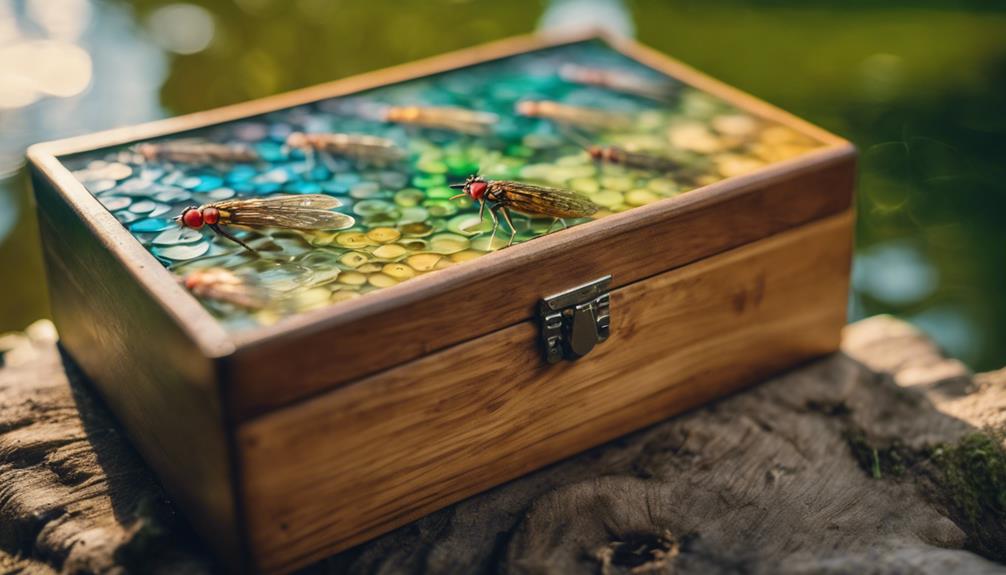Fly fishing is not just a sport; it’s a way to connect with nature and unwind from the hustle and bustle of daily life. If you’re new to this captivating pastime, understanding the essential components of a beginner fly fishing setup is crucial. This guide will walk you through everything you need to know about creating the perfect fly fishing setup, so you can hit the water with confidence.
Understanding the Basics of Fly Fishing
Before diving into the specifics of your beginner fly fishing setup, it’s essential to grasp the fundamentals of fly fishing. Unlike traditional fishing, where bait is used to attract fish, fly fishing relies on artificial flies that mimic the insects and other prey that fish naturally eat. The key to success in fly fishing lies in your ability to present your fly in a way that entices fish to bite. This method can be both challenging and rewarding, making it an ideal choice for those who appreciate the art of fishing.
Choosing the Right Fly Rod: A Fundamental Element
The first step in assembling your beginner fly fishing setup is selecting the right fly rod. Fly rods come in various lengths and weights, catering to different fishing environments and species. For beginners, a 9-foot, 5-weight rod is a versatile choice that can handle a wide range of freshwater species, including trout and bass. When choosing your rod, consider the type of water you’ll be fishing in—smaller streams may require shorter rods, while larger rivers and lakes can benefit from longer rods. Opt for a rod made from durable materials, such as graphite or fiberglass, to ensure longevity in your beginner fly fishing setup.
Selecting the Perfect Fly Reel
Once you’ve chosen your fly rod, the next essential component of your beginner fly fishing setup is the fly reel. A fly reel serves as the storage for your fly line and aids in controlling and retrieving your catch. For beginners, a medium-arbor reel is a great option as it balances line retrieval speed with a lightweight design. Ensure that the reel you select matches the weight of your rod to maintain proper balance and functionality. Look for a reel that features a reliable drag system, which will help you manage the fight when a fish is on the line.
Understanding Fly Lines: The Heart of Your Setup
Fly lines are crucial to your beginner fly fishing setup, as they transfer energy from your cast to the fly. There are various types of fly lines, including floating, sinking, and sink-tip lines, each designed for different fishing conditions. For most beginners, a weight-forward floating line is ideal, as it allows for easy casting and versatility in various water types. When selecting your fly line, ensure it matches the weight of your rod for optimal performance. Additionally, consider the line’s taper design, as this affects casting distance and accuracy.
Picking the Right Leader and Tippet: Connecting It All
After you’ve selected your fly rod, reel, and line, the next step in your beginner fly fishing setup is choosing the right leader and tippet. The leader is the clear line that connects your fly line to the fly, while the tippet is a thinner section of line tied to the end of the leader. For beginners, a monofilament leader of 9 to 12 feet in length with a 4x to 6x tippet is a good starting point. This combination provides the necessary invisibility and strength for a variety of fishing situations, ensuring that your setup is as effective as possible.
Choosing the Right Flies: Matching the Hatch
Selecting the right flies is perhaps one of the most exciting aspects of your beginner fly fishing setup. Flies come in two main categories: dry flies, which float on the water’s surface, and nymphs or streamers, which sink below the surface. To be successful, you’ll need to match the flies to the local insect hatch, which can vary by region and season. As a beginner, consider starting with a selection of popular patterns, such as Adams, Woolly Bugger, and Pheasant Tail Nymph. These versatile flies can entice a range of species and are commonly found in many waters.
Essential Accessories for a Complete Setup
While the primary components of your beginner fly fishing setup are essential, various accessories can enhance your fishing experience. A good pair of polarized sunglasses will help reduce glare on the water, allowing you to see fish more clearly. A fly box is necessary for organizing and storing your flies, while a landing net assists in safely catching and releasing fish. Don’t forget about a quality fishing vest or pack to keep your tools and accessories handy. Lastly, consider investing in a good pair of waders if you plan to fish in deeper waters or cold environments.
Conclusion: Ready to Hit the Water!
Now that you have a comprehensive understanding of the components involved in a beginner fly fishing setup, you’re ready to embark on your fishing journey. Remember that practice makes perfect, so don’t be discouraged if you don’t catch fish right away. Take the time to learn about the water, observe insect activity, and refine your casting technique. With patience and persistence, you’ll develop the skills needed to enjoy this rewarding sport. Happy fishing!
By focusing on the fundamentals and following this guide, you’ll be well-equipped to enjoy the world of fly fishing. Whether you’re fishing in a tranquil stream or a bustling river, your beginner fly fishing setup will provide you with the tools you need for a successful and enjoyable experience.
